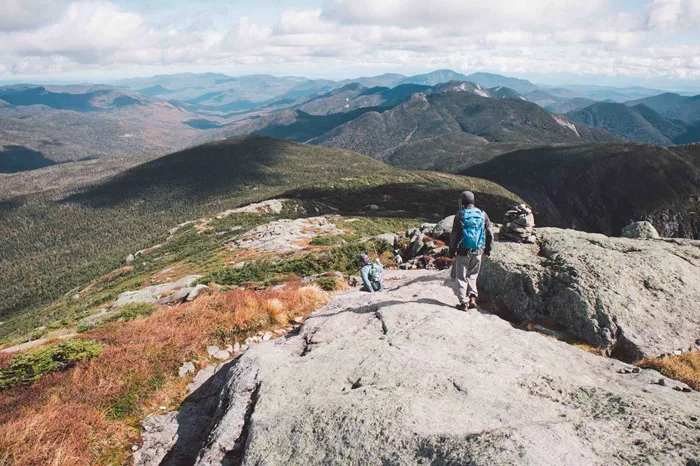After nearly a year of exploring the Olympic Region trails, I finally tackled a challenge that has long beckoned hikers and outdoor enthusiasts alike: summiting Mount Marcy, the tallest peak in New York State.
Rising to 5,344 feet, Mount Marcy dominates the landscape south of Lake Placid and is one of the region’s most popular hikes. From its summit, hikers are treated to panoramic 360-degree views, including nearly all of the 46 High Peaks of the Adirondacks.
I planned the trek to coincide with a special occasion: a vacation visit from my college friend Lewis, an experienced hiker well-prepared for the rigorous journey. Mount Marcy is not for the inexperienced or unprepared, and I closely monitored the shifting weather forecasts to avoid any hazardous conditions, such as thunderstorms or heavy rain.
Despite some wildfire smoke that partially obscured the views, the weather cooperated enough to make the hike rewarding. We began our journey on Saturday, June 7, after picking Lewis up from the Westport train station. Our starting point was the Adirondak Loj near Heart Lake, a key gateway to several Adirondack trails. Visitors should note that the Loj charges both daytime and overnight parking fees, with proceeds supporting the Adirondack Mountain Club, a nonprofit dedicated to conservation and responsible recreation (more information is available at adk.org).
We chose the popular Van Hoevenberg Trail, embarking on a two-day trip with an overnight camp at Marcy Dam. The initial stretch to the dam is relatively easy — a well-maintained two-mile path with gentle elevation gain. The area near the dam offers lean-tos and campsites, which we found readily available despite its popularity.
Camping regulations require food to be stored in bear-resistant canisters, which are mandatory from April through November to reduce wildlife encounters. We adhered strictly to these rules, placing our canister well away from the campsite.
Our first night was peaceful, despite the presence of some blackflies, which were thankfully less aggressive than in past seasons. Early the next morning, we packed up and left our tent securely tucked away at the campsite to avoid carrying unnecessary weight during the ascent.
From Marcy Dam, the trail grew steeper and rockier. Much of the path was wet or muddy due to recent rains, with some sections resembling streams rather than typical hiking trails. The Van Hoevenberg Trail crosses Phelps Brook twice and intersects with trails leading to nearby peaks, including Phelps Mountain and Table Top Mountain.
A highlight of the climb is Indian Falls, a scenic rest point with excellent views of the MacIntyre Range. The falls also provide the last reliable water source for hikers before the summit.
Above the tree line, the trail features wooden walkways to traverse alpine bogs. The final push to the summit is steep but manageable, with no technical climbing required. Remarkably, patches of snow lingered near the peak in early June, even drawing backcountry skiers eager for late-season turns.
Despite some haze from wildfire smoke, the summit offered spectacular views of many surrounding peaks — including Algonquin, Wright, Iroquois, and more. Unfortunately, visibility toward Lake Champlain and Lake Placid village was limited that day.
The descent proved physically demanding, as navigating the rocky terrain required careful footing. We paused again at Indian Falls before completing the final stretch back to the Adirondak Loj, where we finally enjoyed the comfort of our car’s air conditioning.
While Mount Marcy is considered one of the easier High Peaks due to its relatively gentle slope and lack of scrambling, the hike remains strenuous. Our GPS logged just over 15 miles round trip, with a total elevation gain exceeding 3,100 feet.
For experienced hikers in good physical condition, Mount Marcy offers a rewarding adventure with breathtaking views and a true sense of accomplishment in New York’s Adirondack High Peaks region.


